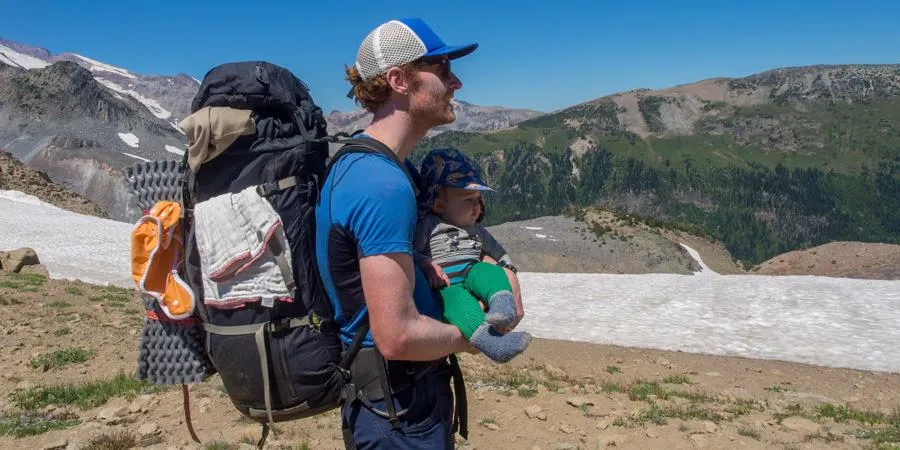I've spent over a decade exploring trails with my family, and I can tell you that hiking with children safety tips are essential for creating memorable outdoor adventures. This comprehensive guide covers everything from essential safety gear to emergency preparedness, helping you plan worry-free family hikes. Whether you're a beginner or experienced hiker, these proven strategies from Nature Guests will ensure your children stay safe while developing a lifelong love for the outdoors.
Essential Safety Gear for Kids
When it comes to hiking with children safety tips, having the right gear can make the difference between a magical family adventure and a stressful ordeal. I've learned through experience that children need specialized equipment designed for their smaller frames and unique safety requirements. The key is to balance functionality with comfort, ensuring your kids can enjoy the trail while staying protected.
Safety whistles are absolutely non-negotiable for family hikes. I equip each of my children with a high-decibel emergency whistle attached to their clothing or backpack. These whistles can be heard from significant distances and serve as a lifeline if a child becomes separated from the group. During our hikes in Rocky Mountain National Park, I've seen how quickly children can disappear around trail bends, making communication tools essential.
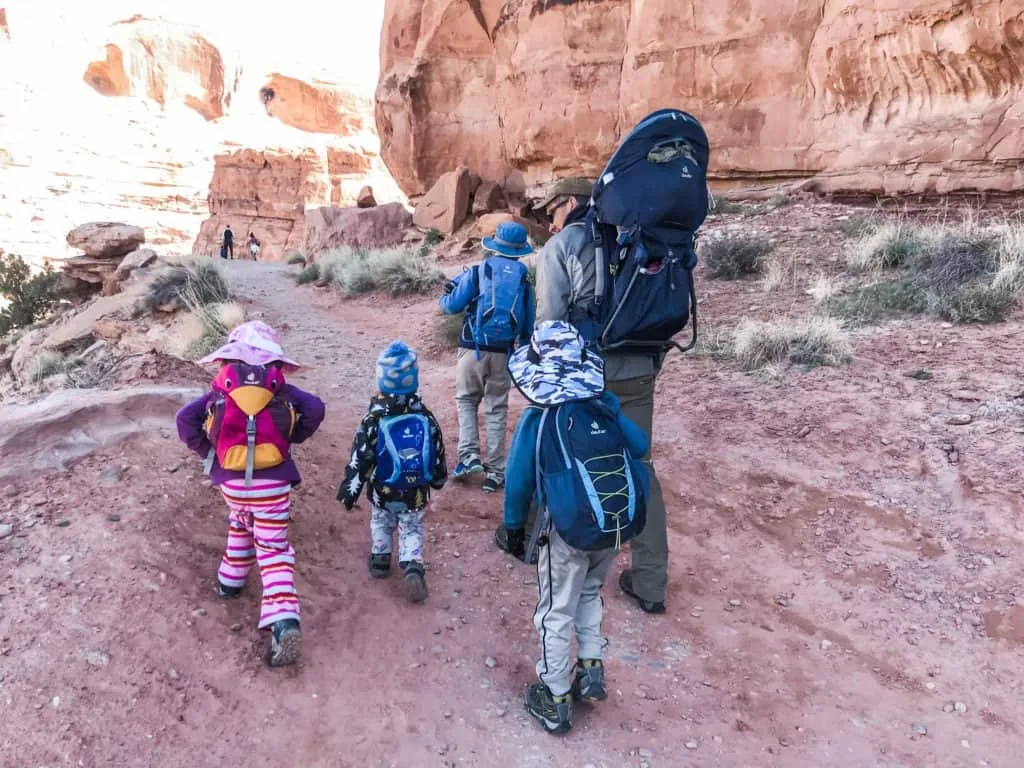
Must-Have Safety Equipment Checklist
- High-decibel emergency whistle with lanyard
- Properly fitted hiking backpack with reflective strips
- First aid kit with child-specific supplies
- GPS tracking device or emergency locator beacon
- Weather-appropriate clothing layers
- Child identification with emergency contacts
A well-fitted children's hiking backpack serves multiple safety purposes beyond just carrying supplies. Modern kids' backpacks often include built-in safety features like reflective strips, whistle attachments, and hydration systems. I recommend choosing backpacks with bright colors and multiple attachment points for safety gear. The psychological benefit of giving children their own gear also increases their engagement and responsibility on the trail.
Emergency Safety Whistle
120+ decibel emergency whistle with reflective lanyard - essential for child safety on trails
View on AmazonKids Hiking Backpack
Lightweight 15L kids backpack with safety features and hydration compatibility
View on AmazonGPS tracking devices have revolutionized family hiking safety. While I maintain that direct supervision is irreplaceable, having a backup location system provides invaluable peace of mind. These devices work even in areas with limited cell coverage, using satellite networks to pinpoint exact locations. For families with multiple children or those hiking in challenging terrain, GPS trackers are particularly valuable safety investments. Similar to how experienced hikers use senior hiking preparation techniques, family groups need specialized planning approaches for maximum safety.
Pre-Hike Planning and Preparation
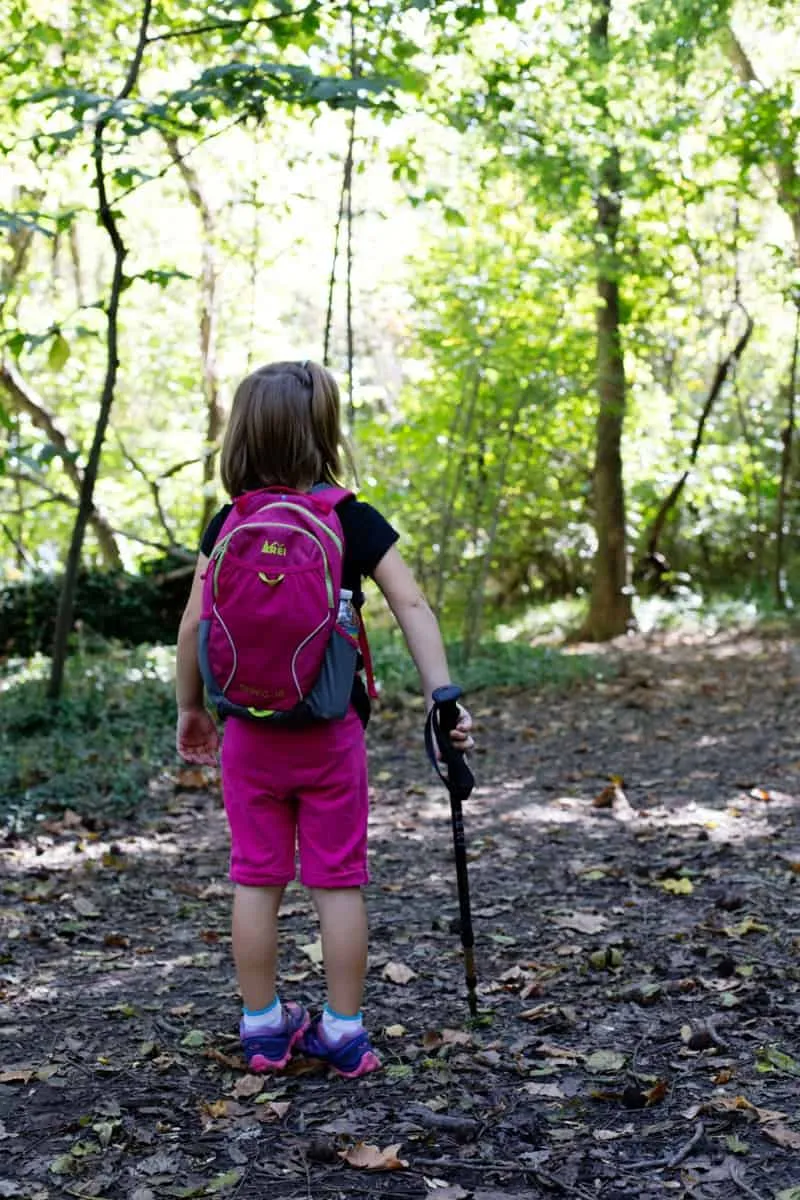
Successful hiking with children safety tips begin long before you hit the trail. Thorough preparation is the foundation of family hiking safety, and I've discovered that the time invested in planning directly correlates with the quality and safety of the hiking experience. This preparation phase should involve the entire family, making children active participants in their own safety planning.
Route research is critical when hiking with children. I spend considerable time studying trail conditions, elevation profiles, and potential hazards before each family hike. Trail difficulty ratings designed for adults don't always translate to family-friendly experiences. What might be rated as "easy" for adults could present significant challenges for children, especially regarding stream crossings, exposure, or trail length.
Essential Pre-Hike Planning Steps
Trail Research
- Check recent trail conditions and closures
- Review elevation gain and technical difficulty
- Identify water sources and rest areas
- Study weather forecasts and seasonal considerations
Family Preparation
- Involve children in route planning
- Set realistic expectations and goals
- Practice essential safety skills at home
- Create emergency contact information cards
Weather assessment goes beyond simply checking the forecast. Mountain weather can change rapidly, and children are more susceptible to temperature extremes than adults. I always prepare for conditions that are one level more severe than predicted. This means bringing rain gear even on sunny days and extra insulation layers for shoulder-season hikes. Creating contingency plans for weather changes is an essential part of hiking with children safety tips that many families overlook.
Family communication planning establishes protocols before emergencies occur. I teach my children specific whistle signals, designate meeting points along the trail, and establish clear boundaries for how far ahead or behind they can travel. These protocols become second nature through practice, similar to fire drills at school. The goal is creating automatic responses that don't require thinking during stressful situations.
Equipment checks should become routine family activities. I involve my children in gear inspection, teaching them to identify worn equipment or missing supplies. This process serves multiple purposes: ensuring gear reliability, educating children about equipment importance, and building their confidence in outdoor settings. Just as training for multi-day trek safety requires systematic preparation, family day hikes benefit from thorough equipment protocols.
Trail Selection and Age-Appropriate Routes
Choosing appropriate trails is perhaps the most critical aspect of hiking with children safety tips. Trail selection directly impacts safety, enjoyment, and the likelihood of completing your planned route successfully. I've learned that matching trail difficulty to your least experienced hiker, rather than the most experienced, creates safer and more enjoyable family experiences. This approach prevents dangerous situations where parents feel pressured to continue beyond their children's capabilities.
Ages 2-5
- Maximum 1-2 miles total distance
- Minimal elevation gain (under 500 feet)
- Wide, well-maintained trails
- Interesting features like streams or rocks
- Loop trails to maintain interest
Ages 6-10
- 3-5 miles with moderate difficulty
- Up to 1000 feet elevation gain
- Some technical terrain acceptable
- Educational opportunities
- Clear destination goals
Ages 11+
- 5+ miles with challenging terrain
- Significant elevation gain acceptable
- Technical skills development
- Leadership opportunities
- Longer duration adventures
Environmental hazards require special consideration when selecting family-friendly trails. I avoid routes with significant exposure, unmarked trail junctions, or areas known for dangerous wildlife activity. Stream crossings can be particularly hazardous with children, as water levels can change rapidly and children may not recognize swift-water dangers. Even small creeks can pose serious risks to young hikers who lack the experience to assess water conditions accurately.
Trail Features to Avoid with Young Children
- Cliff edges without barriers
- Unmarked trail intersections
- Steep drop-offs
- Known wildlife congregation areas
- Swift water crossings
- Loose rock or scree fields
- Avalanche or rockfall zones
- Areas with poisonous plants
Trail conditions can vary dramatically with seasons, making route selection a dynamic process. I maintain a rotation of family-friendly trails that I know well, allowing me to assess conditions firsthand before bringing children. This approach builds familiarity with escape routes, water sources, and potential hazards. Having backup trail options ready ensures that families can adjust plans based on current conditions without compromising safety standards.
The psychological aspects of trail selection often receive inadequate attention in hiking with children safety tips. Children need clear, achievable goals to maintain motivation and prevent dangerous situations that arise from exhaustion or discouragement. I prefer trails with multiple bailout points rather than out-and-back routes that commit families to completing the entire distance. This flexibility prevents the dangerous mindset of "we have to finish" that can lead to poor safety decisions. Unlike hiking with pets safety tips where animals follow instincts, children require constant engagement and motivation management to ensure safe trail experiences.
Emergency Preparedness and First Aid
Emergency preparedness represents the most critical component of hiking with children safety tips. Children are more susceptible to injuries, temperature extremes, and dehydration than adults, making comprehensive first aid knowledge essential for family hiking. I've witnessed how quickly minor incidents can escalate when proper emergency protocols aren't in place. The key is preparing for situations before they occur, ensuring you can respond effectively under stress.
Pediatric first aid differs significantly from adult emergency care. Children's bodies respond differently to injuries and environmental stresses, requiring specialized knowledge and equipment. I maintain first aid certification specifically focused on pediatric emergencies, which has proven invaluable during family outdoor adventures. Basic skills like recognizing hypothermia symptoms in children, treating altitude sickness, and managing severe allergic reactions can be life-saving.
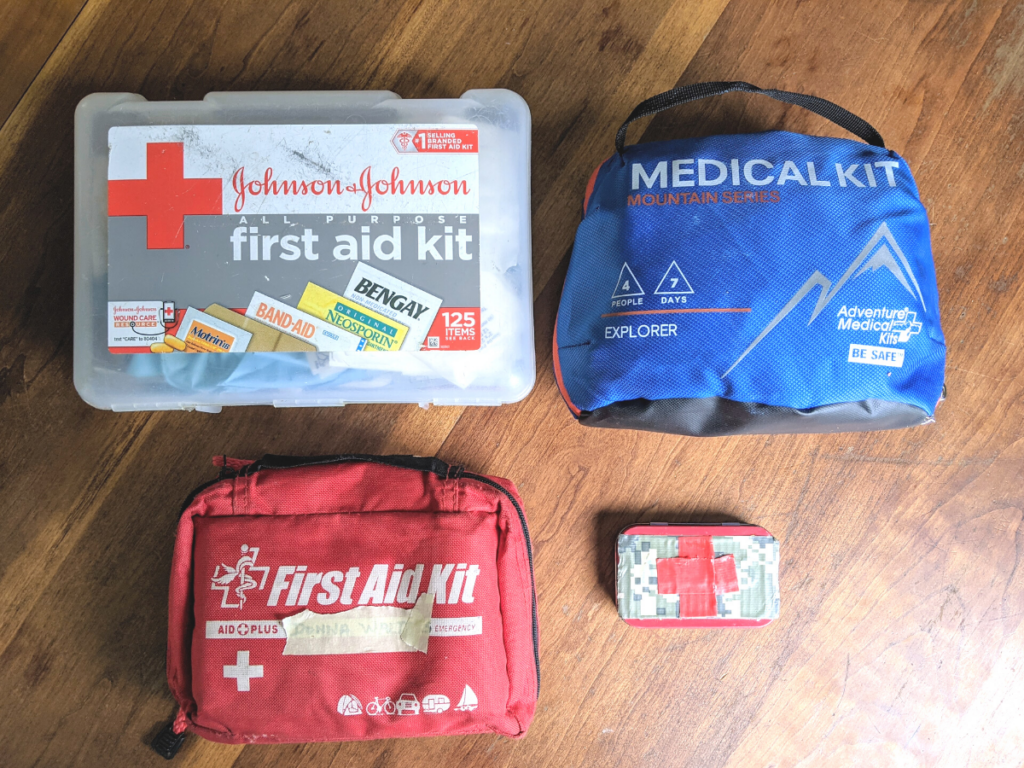
Family First Aid Kit
Comprehensive 108-piece outdoor first aid kit designed for family hiking adventures
View on AmazonGPS Emergency Locator
Personal locator beacon with GPS tracking and SOS emergency features for family safety
View on AmazonCommunication planning becomes critical during emergencies involving children. I ensure every family member understands emergency protocols, including when and how to use signaling devices, where to go if separated, and how to provide location information to rescuers. Children should carry identification with emergency contact information and any medical conditions clearly documented. Modern technology offers additional safety layers through GPS tracking devices and satellite communicators.
Essential Emergency Skills for Family Hiking
Medical Response
- Pediatric wound care and bleeding control
- Recognizing and treating hypothermia
- Managing allergic reactions
- Altitude sickness identification
Communication & Rescue
- Proper use of emergency signaling devices
- Search and rescue communication protocols
- Location identification and GPS coordination
- Shelter construction and survival priorities
Evacuation planning requires special consideration when hiking with children. Traditional adult evacuation methods may not work with young hikers who cannot traverse difficult terrain independently. I always plan routes with multiple exit strategies and consider how to transport injured children if necessary. This planning includes identifying cell phone coverage areas, knowing the locations of nearby roads or facilities, and understanding local search and rescue protocols. Emergency preparedness overlaps significantly with general safety awareness, much like hiking solo at night precautions require heightened situational awareness, family emergency planning demands comprehensive scenario preparation.
Teaching Children Outdoor Safety Rules
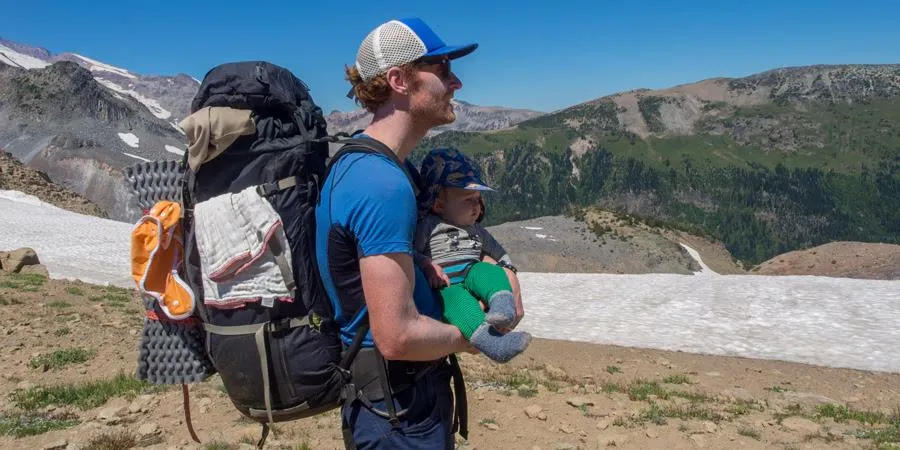
Teaching children outdoor safety rules forms the foundation of successful hiking with children safety tips. Unlike adults who can rely on experience and judgment, children need clear, simple rules that they can remember and follow under stress. I've found that children respond best to safety education that combines clear expectations with engaging explanations of why rules exist. Making safety education interactive and age-appropriate ensures better retention and compliance.
The "STOP" protocol serves as my primary safety teaching tool for children. When children realize they're lost or separated, they should Stop, Think, Observe, and Plan. This systematic approach prevents panic-driven mistakes that often worsen dangerous situations. I practice this protocol with my children during every hike, turning it into a game that reinforces proper responses without creating anxiety about being lost.
Age-Appropriate Safety Rules Framework
Ages 3-6
- Stay within sight of adults
- Hold hands near drop-offs
- Whistle if scared or lost
- Stay on marked trails
- Don't touch unfamiliar plants
Ages 7-11
- Learn whistle signals
- Understand boundary distances
- Identify dangerous wildlife
- Practice STOP protocol
- Carry safety equipment
Ages 12+
- Navigation skills development
- Emergency response leadership
- First aid basics
- Weather assessment
- Risk evaluation skills
Wildlife awareness education requires careful balance between safety consciousness and fear avoidance. I teach children to recognize potentially dangerous animals while emphasizing that wildlife encounters are typically avoidable through proper precautions. This education includes understanding animal behavior, making appropriate noise while hiking, and knowing how to respond to different wildlife encounters. Children need to understand that their safety often depends on not surprising animals rather than avoiding all wildlife areas.
Buddy system implementation creates redundant safety measures while teaching children mutual responsibility. I pair children of different ages when possible, allowing older children to develop leadership skills while providing additional supervision for younger hikers. This system works particularly well during trail breaks or when examining interesting natural features that might otherwise distract individual children from staying alert to their surroundings.
Environmental hazard recognition becomes increasingly important as children gain independence on trails. I teach children to identify unstable rocks, slippery surfaces, poisonous plants, and potentially dangerous water conditions. This education extends beyond simple identification to understanding why these hazards exist and how to navigate around them safely. Role-playing exercises during safe conditions help reinforce proper decision-making when children encounter similar situations independently.
Regular safety reviews maintain skill sharpness and adapt rules to children's developing capabilities. I conduct brief safety discussions before each hike, reviewing relevant rules and discussing specific hazards we might encounter. These discussions also provide opportunities for children to ask questions and share their own observations about trail safety. Building this communication pattern creates an environment where children feel comfortable reporting concerns or asking for help when needed, which is essential for maintaining safety during actual emergencies. This educational approach is as comprehensive as our complete hiking with children safety tips guide, ensuring families have multiple layers of preparation.
Weather Considerations and Seasonal Safety
Weather awareness represents one of the most critical yet often overlooked aspects of hiking with children safety tips. Children's bodies regulate temperature differently than adults, making them more susceptible to both hypothermia and heat-related illnesses. Mountain weather can change dramatically within hours, transforming safe hiking conditions into dangerous situations that require immediate response. I've learned to prepare for weather conditions that are significantly more severe than forecasts suggest.
Cold Weather Precautions
- Layer system with moisture-wicking base layers
- Extra insulation for rapid temperature drops
- Waterproof outer layers for wind protection
- Insulated, waterproof footwear
- Hat and gloves regardless of starting temperature
- Emergency shelter and warming supplies
- High-energy snacks for temperature regulation
Hot Weather Safety
- Early morning start times to avoid peak heat
- Increased water consumption (more than adults)
- Electrolyte replacement for extended hikes
- Sun protection clothing and wide-brimmed hats
- High SPF sunscreen reapplied frequently
- Shade-seeking behavior and rest strategies
- Recognition of heat exhaustion symptoms
Seasonal hazard awareness goes beyond temperature considerations to include trail-specific dangers that change throughout the year. Spring hiking presents unique challenges with unstable trail conditions from freeze-thaw cycles, increased wildlife activity, and unpredictable weather patterns. Summer brings different risks including thunderstorm development, increased heat stress, and crowded trail conditions that can complicate emergency response. Fall and winter hiking require specialized knowledge about hypothermia prevention, daylight limitations, and equipment requirements.
Seasonal Safety Planning Calendar
Spring
Muddy conditions, wildlife activity, weather unpredictability
Summer
Heat stress, thunderstorms, crowded trails
Fall
Shorter days, temperature drops, leaf-covered hazards
Winter
Hypothermia risk, limited daylight, specialized equipment
Lightning safety deserves special attention when hiking with children during summer months. Children may not recognize the subtle signs of approaching thunderstorms, and their shorter stature makes them particularly vulnerable to ground current from lightning strikes. I teach families to monitor cloud development continuously and establish clear protocols for seeking shelter when thunder becomes audible. The 30-30 rule (seek shelter when thunder follows lightning by 30 seconds or less, wait 30 minutes after last thunder) provides clear guidelines that children can understand and remember.
Altitude considerations affect children differently than adults, often with more pronounced symptoms at lower elevations. I plan gradual acclimatization for family trips to higher altitudes and monitor children carefully for signs of altitude sickness. Symptoms can develop rapidly in children and may be difficult to distinguish from normal fatigue or excitement. Having descent plans ready and understanding when altitude symptoms require immediate action prevents dangerous situations from escalating beyond manageable levels.
Weather contingency planning should include specific protocols for different weather scenarios. I prepare alternate routes, shelter locations, and evacuation plans for various weather emergencies. This planning process involves the entire family, ensuring everyone understands their role in different weather situations. Children need to know how to recognize dangerous weather changes and what actions to take immediately. These protocols become especially important during extended backcountry trips where weather changes can prevent return to trailheads as planned.
Conclusion
Successfully implementing hiking with children safety tips creates the foundation for lifelong outdoor adventures and family memories.
Throughout my years of family hiking experience, I've learned that comprehensive hiking with children safety tips extend far beyond simple gear lists or basic precautions. True hiking safety with children requires a holistic approach that combines proper equipment, thorough planning, ongoing education, and adaptive decision-making. The strategies outlined in this guide represent proven methods that have kept countless families safe while exploring some of the world's most beautiful outdoor spaces.
The investment in proper safety preparation pays dividends beyond immediate protection. Children who learn outdoor safety skills early develop confidence, judgment, and appreciation for natural environments that serve them throughout their lives. These experiences create family bonds that strengthen over years of shared adventures, while building children's physical fitness, problem-solving abilities, and environmental awareness. The memories created during safe, well-planned family hikes often become the foundation for children's future outdoor pursuits.
Navigation & GPS Tracker
Professional GPS tracker with real-time location sharing for ultimate family hiking safety
View on AmazonFamily Hiking Guide
Complete reference guide for family outdoor adventures with safety checklists and trail recommendations
View on AmazonImplementation of these safety strategies should be gradual and adapted to your family's specific needs and experience levels. Start with shorter, easier trails while building safety skills and confidence. As children develop outdoor competencies, you can gradually introduce more challenging adventures while maintaining the same rigorous safety standards. Remember that safety protocols need regular review and updating as children grow and trail conditions change with seasons and years.
The outdoor community benefits when families practice excellent safety standards and share their experiences with others. Consider connecting with local hiking groups, participating in family outdoor education programs, and contributing to trail maintenance efforts. These activities provide additional learning opportunities while building the supportive community networks that enhance outdoor safety for everyone. Teaching children to be responsible outdoor citizens ensures that future generations will have access to the same incredible natural spaces we enjoy today.
Finally, remember that perfect safety doesn't exist in outdoor environments, but excellent preparation dramatically reduces risks while maximizing enjoyment. The goal is not to eliminate all adventure and challenge from family hiking, but to manage risks intelligently so that children can experience the incredible benefits of outdoor exploration safely. When families consistently apply comprehensive hiking with children safety tips, they create opportunities for transformative experiences that shape children's relationship with nature and adventure for decades to come.
Ready to Start Your Family Adventure?
Apply these safety tips on your next family hike and discover the joy of exploring nature together safely and confidently.


